What is content automation: Key benefits, tools and tips
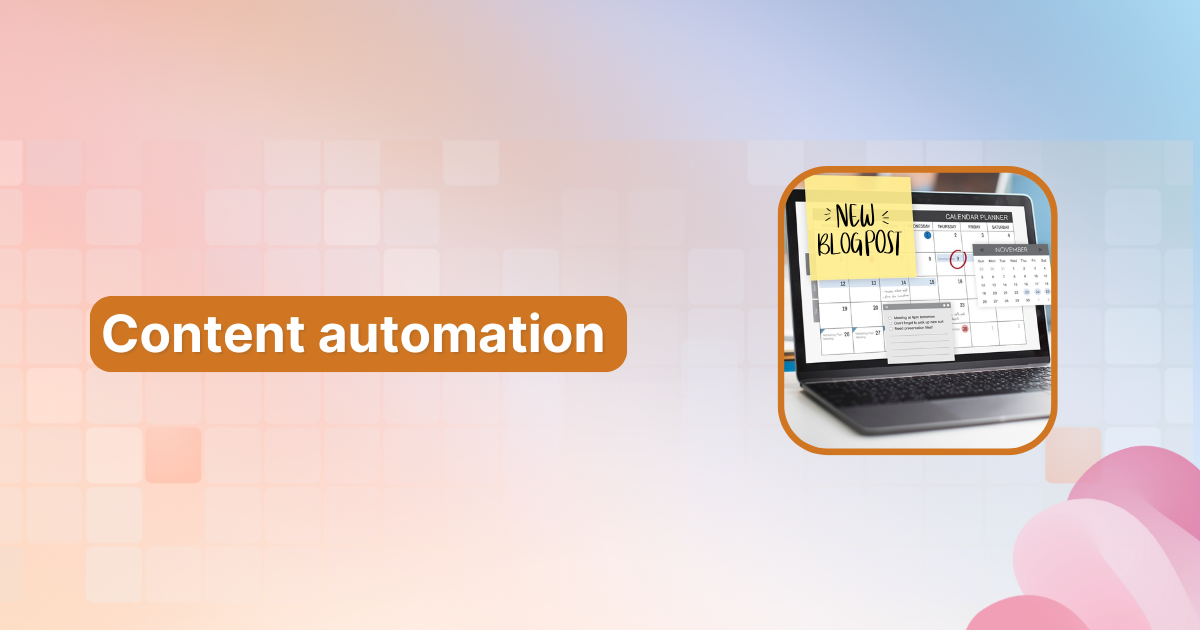
Content creation isn’t just about producing high-quality posts anymore – it’s about efficiency, scalability, and maximizing impact. That’s where content automation comes in.
By automating the time-consuming tasks of brainstorming ideas, writing, designing visuals, and scheduling posts across multiple platforms, marketers can streamline their workflow and boost productivity.
With the right AI blog writer and best content marketing practices, businesses can curate and distribute content at an unprecedented scale.
While some believe automation tools are costly, the reality is that organizations see a $5.44 return for every dollar spent on marketing automation. This proves that automation isn’t just a convenience—it’s a powerful investment for businesses looking to scale efficiently.
But how does content marketing automation actually work? What tools and strategies can help you maximize results?
In this blog post, we’ll break down everything you need to know—from how content automation works to the best tools and strategies for implementing it successfully.
Let’s start with the basics.
What is content automation?
Content automation refers to the use of technology and software tools to streamline, optimize, and partially automate the processes involved in content marketing.
It includes everything from content planning and creation to distribution and performance tracking, utilizing artificial intelligence, machine learning, and other advanced technologies to reduce manual intervention while maintaining content quality.
At its core, content automation is about working smarter, not harder. Think of it as having a digital assistant that handles repetitive tasks while you focus on strategy and creativity.
With content automation, businesses can:
- Generate high-quality blog posts, social media captions, and ad copy automatically.
- Schedule and distribute content across multiple channels with minimal effort.
- Optimize content performance through AI-driven insights and analytics.
- Maintain brand consistency while scaling content production.
How does content automation work?
Content automation leverages AI, NLP, ML, and workflow automation to streamline content creation, optimization, and distribution. Instead of manually managing content, businesses use automation tools to generate, schedule, and optimize with minimal effort.
Core technologies behind content automation:
- Artificial intelligence (AI): AI analyzes data to suggest topics, keywords, and formats. Tools like Contentpen generate optimized blog posts in clicks.
- Natural language processing (NLP): NLP enhances content quality, making it more readable and SEO-friendly.
- Machine learning (ML): ML learns from interactions, optimizing strategies and automating A/B testing. Tools like Grammarly and SEMrush provide personalized recommendations.
- Workflow automation: Automates tasks like content research, scheduling, multi-channel distribution, and performance analysis.
Also read: Does Google ranks AI content?
How to use content marketing automation?
Content marketing automation streamlines your workflow, saving time and effort while maintaining consistency and quality.
However, to make the most of automation, you need the right strategies and tools. Here’s how to effectively use content marketing automation for maximum impact.
- Define your content marketing goals
Before implementing automation, clearly define your objectives. Ask yourself:
- Do you want to generate more leads?
- Are you aiming to improve engagement on your blog?
- Do you need to boost website traffic?
By setting specific goals, you can choose the right automation tools and strategies to align with your business needs.
- Identify the right tasks to automate
Not every part of content marketing should be automated. The key is to automate repetitive tasks while maintaining a human touch where needed.
Here are some key areas where automation works best:
a. Content research
- Use AI-powered tools to analyze trending topics, keywords, and competitors.
- Automate search intent analysis to create content that aligns with user needs.
b. Content creation
- AI writing assistants can help generate blog drafts, captions, and ad copies.
- Automated content outlines ensure better structure and SEO optimization.
c. Social media scheduling
- Schedule posts in advance across multiple platforms.
- Use AI to determine the best times to post based on audience behavior.
d. Email marketing
- Set up automated email sequences for welcome messages, follow-ups, and promotions.
- Personalize emails with AI-driven recommendations.
e. Performance tracking & reporting
- Automate analytics reports to measure content effectiveness.
- Get insights on engagement, conversions, and areas for improvement.
- Choose the right content automation tools
To successfully automate your content marketing efforts, you need the right tools. Different tools serve different purposes, so make sure you are choosing the ones that fit your specific needs. We will be discussing the usage of some of the top content automation tools in detail in the later section.
- Maintain a balance between automation and human touch
While automation improves efficiency, content marketing still requires creativity and authenticity. To maintain a human touch:
- Personalize AI-generated content before publishing.
- Use automation for efficiency but keep storytelling and branding elements human-driven.
- Engage directly with your audience by responding to comments and messages manually.
- Monitor and optimize your automation strategy
Automation is not a set-it-and-forget-it solution. Regularly analyze your content’s performance and make adjustments as needed.
- Track key metrics like engagement, CTR, and conversion rates.
- Test different content formats and posting schedules.
- Continuously refine automated processes to improve results.
Top content automation tools
Content automation is only as effective as the tools you use. Whether you’re looking to streamline content creation, social media management, email marketing, or ad campaigns, choosing the right automation tools can save time, improve efficiency, and maximize results.
Here’s a list of the top content automation tools categorized by their purpose:
1. Contentpen: SEO-optimized content generation
Contentpen is a next-generation AI-driven content automation tool designed to create high-impact, SEO-optimized blogs.
Unlike generic AI writing tools, Contentpen is powered by multiple AI agents that work collaboratively to research, create, and refine content that aligns perfectly with your brand’s voice.
The key features of ContentPen that make it one of the best content automation tools are:
- AI-powered brand learning: Contentpen’s AI deeply analyzes your brand, audience, and competitors to generate relevant and engaging content.
- Automated keyword & title selection: Get high-CTR title suggestions based on search intent.
- Deep topic research: Conducts SERP analysis and content gap analysis to create data-driven content.
- Optimized blog outline: Generates a structured, research-backed outline for SEO-friendly articles.
- High-quality first draft: AI agents collaborate to generate authoritative, engaging content.
- SEO optimization & quality review: The tool refines content based on the latest SEO guidelines.
- Final enhancements: Adds strategic internal and external links, relevant images, and other SEO elements.
- Easy publishing: Contentpen can integrate with WordPress and other CMS platforms for quick and easy publishing.
- Bulk content generation: Scale content creation without sacrificing quality.
- Article refreshing: Update and optimize existing blogs for continued relevance.
- Approval workflow for teams & clients: Supports collaboration and content approval processes.
With Contentpen, businesses can automate and scale content production while maintaining quality and brand consistency.
Also read: How to write an article using Contentpen?
2. Canva: Visual content and design automation
Creating high-quality images, graphics, and videos is essential for content marketing. Visual content automation tools streamline design, editing, and branding with minimal effort.
Canva is one of the most popular design tools for automating visual content creation. It offers a vast collection of templates, drag-and-drop functionality, and AI-powered design suggestions.

Whether you need social media graphics, presentations, infographics, or marketing materials, Canva simplifies the design process without requiring advanced skills.
Some of the key features of Canva are:
- Pre-designed templates: Thousands of customizable templates for social media, blogs, ads, and more.
- Brand kit: Ensures consistency by allowing you to save logos, fonts, and colors.
- AI-powered magic resize: Instantly resizes designs for different platforms.
- AI text-to-image tool: Generates unique visuals based on descriptions.
- Video editing & animation: Automates video creation with transitions, music, and text overlays.
Canva’s automation features make it an excellent tool for marketers looking to streamline content production without compromising quality.
Other notable visual content automation tools
While Canva is a leading choice, several other tools offer automation for visual content:
- Adobe Express: AI-powered image editing and branding tool with quick design templates.
- DALL·E (by OpenAI): Generates high-quality AI-created images from text prompts.
- Lumen5 & Pictory: Converts blog posts into engaging video content using AI.
- Postnitro: An AI-driven carousel creator for Instagram, LinkedIn, and other platforms.
Each tool brings unique features to the table, allowing marketers to automate and enhance their visual content creation process efficiently.
3. ContentStudio: Manage and automate your social media presence
Managing multiple social media accounts manually is exhausting. Social media automation tools streamline scheduling, posting, and engagement tracking, helping businesses maintain a consistent online presence.
ContentStudio is a comprehensive social media management tool that simplifies content creation, scheduling, and publishing while providing valuable analytics.
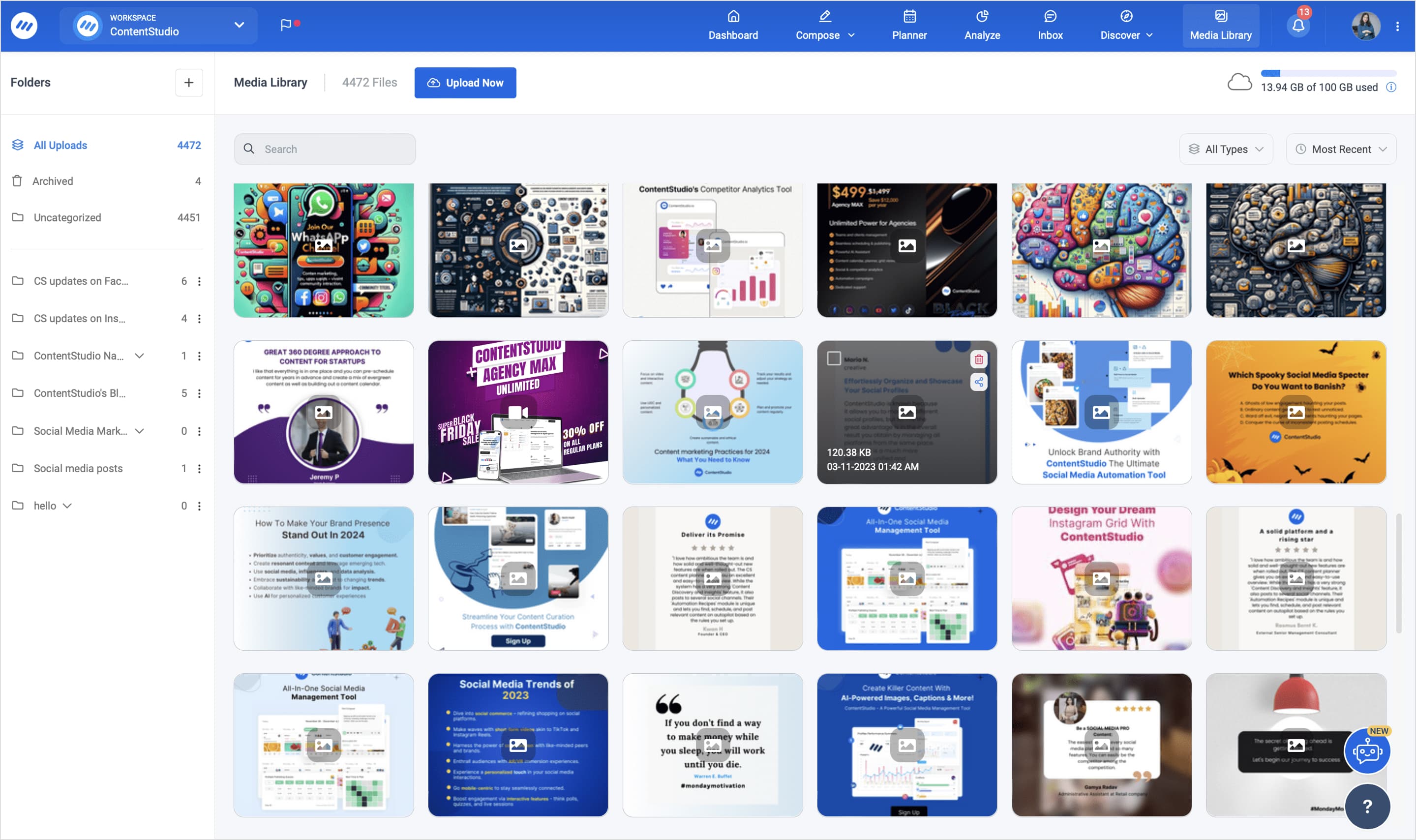
It helps businesses and marketers automate workflows, ensuring efficiency and consistency across multiple social media platforms. The key features that make ContentStudio the best way to manage your social media presence are:
- Post scheduling and publishing: Plan and schedule posts across multiple social media platforms from a single dashboard.
- AI-generated captions and hashtags: Get smart suggestions to improve engagement and reach.
- Content discovery and curation: Find trending topics and relevant articles to share with your audience.
- Social inbox management: Monitor and respond to messages, comments, and mentions in one place.
- Collaboration and approval workflow: Work with teams, set roles, and get approvals before publishing.
- Performance analytics: Track engagement, reach, and audience behavior with detailed insights.
Other notable social media automation tools
While ContentStudio is a leading choice, other tools offer automation capabilities for social media management:
- Zapier: Connects social media apps, automating cross-platform posting.
- Buffer: Schedules and publishes content while providing analytics on engagement.
- Hootsuite: Manages multiple accounts and tracks audience interactions.
- Sprout Social: Combines publishing, engagement, and analytics in one platform.
Each of these tools helps streamline social media marketing, making it easier to maintain a strong and active online presence.
4. Mailchimp: Email marketing & ad automation
Email and ad automation tools personalize campaigns, optimize budgets, and track performance in real time. They streamline email marketing workflows, enable personalized outreach, optimize ad spending with AI-driven insights, and improve ROI through automated A/B testing and audience segmentation.
Mailchimp is one of the most powerful email marketing platforms, offering automation features that help businesses send personalized and targeted emails at scale. Its AI-driven insights optimize email performance and audience engagement.
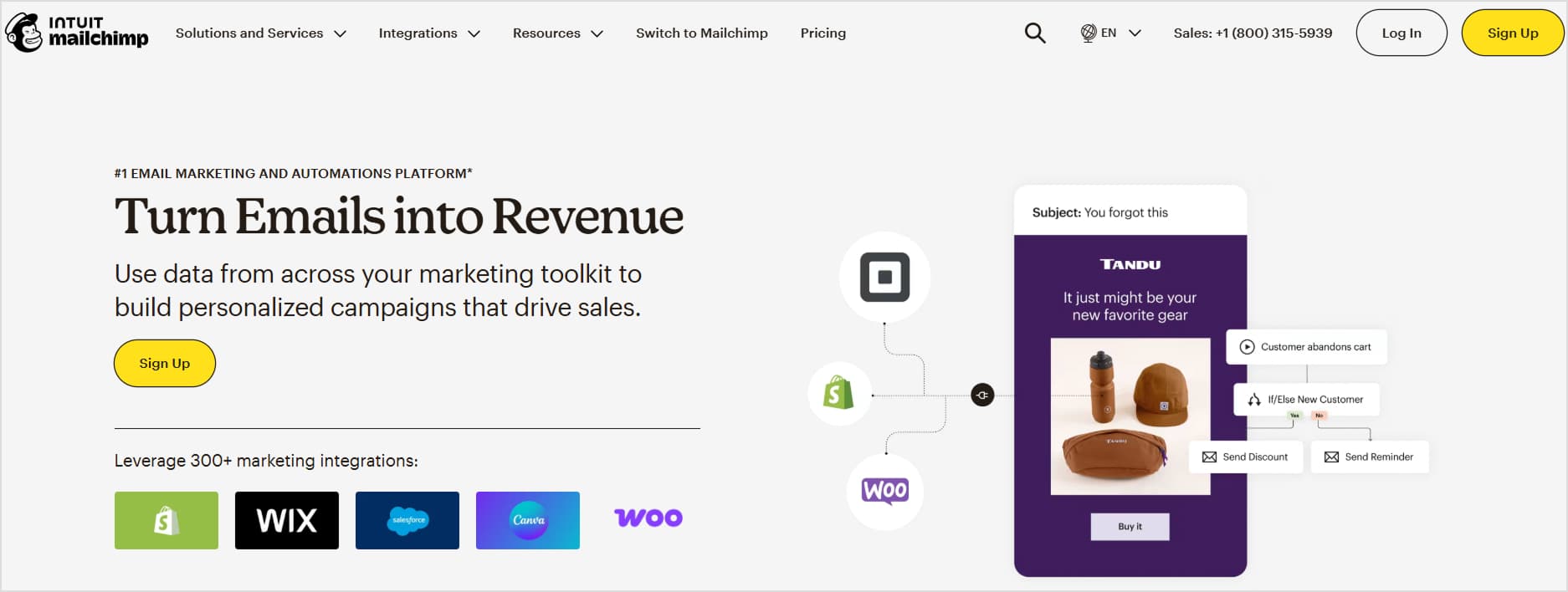
You can automate your email marketing with Mailchimp through these features:
- Automated email sequences: Set up drip campaigns, welcome emails, and follow-up messages with ease.
- Audience segmentation: Categorize subscribers based on behavior, demographics, and preferences for better targeting.
- AI-powered recommendations: Get smart content suggestions and send-time optimization for higher engagement.
- A/B testing: Test different subject lines, content, and send times to improve campaign effectiveness.
- E-commerce integration: Connect with Shopify, WooCommerce, and other platforms to send abandoned cart emails and product recommendations.
- Performance analytics: Track email open rates, click-through rates, and conversions with real-time insights.
Other notable email and ad automation tools
While Mailchimp is a leading email automation platform, other tools excel in ad and campaign automation:
- HubSpot: A complete marketing automation tool with email, CRM, and sales integration.
- Google Ads automation: Uses AI-powered smart bidding and audience targeting to optimize ad spend.
- Meta (Facebook) Ads Manager: Automates ad campaigns with AI-driven audience insights and bidding strategies.
- Adzooma & Smartly.io: AI-powered platforms for automating and optimizing ad campaigns across multiple channels.
These tools help businesses enhance their email and advertising strategies, ensuring better reach, engagement, and return on investment.
5. AI-powered chatbots & customer support tools
AI-powered chatbots handle customer queries, FAQs, and lead generation, enhancing customer support and engagement. They automate responses, reduce wait times, improve lead generation with AI-driven interactions, and free up human teams for higher-value tasks.
Intercom is a powerful AI chatbot and customer support tool that helps businesses provide instant, personalized responses to customer inquiries. It automates conversations while allowing seamless handoff to human agents when needed.
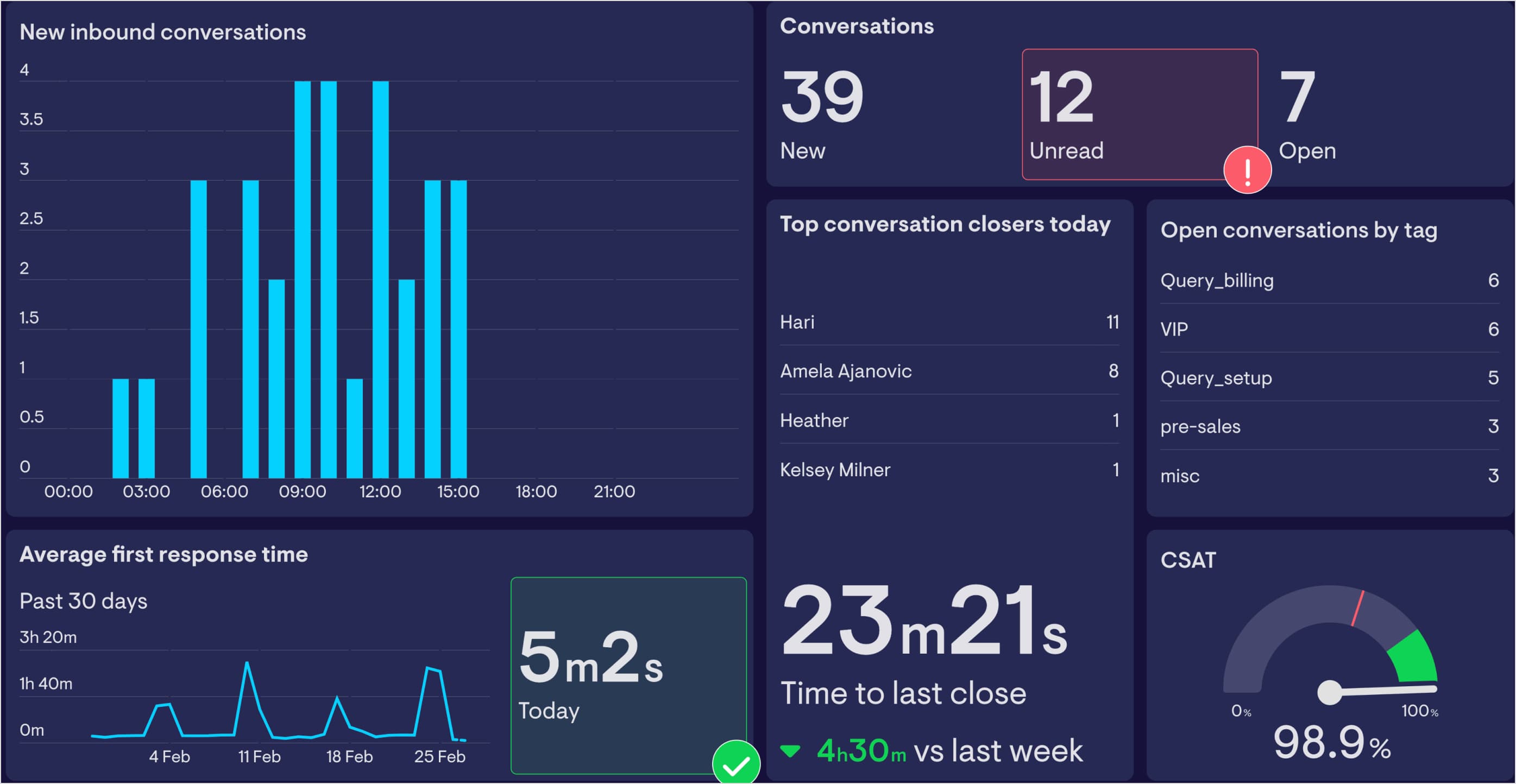
The key features of Intercom are:
- AI-powered chatbots: Automate customer support, lead qualification, and FAQs.
- Proactive messaging: Engage visitors with targeted messages based on behavior.
- Workflow automation: Automate ticket routing and customer support workflows.
- Omnichannel support: Manage conversations across websites, apps, and social media.
Other notable chatbot & customer support tools
While Intercom is a leading chatbot solution, other tools offer powerful automation features:
- ManyChat & MobileMonkey: AI chatbots for social media and website engagement.
- Drift: Conversational marketing chatbot focused on lead generation.
- ChatGPT (API Integration): Custom AI chatbot integration for businesses.
These AI-powered tools enhance customer interactions, improve response times, and help businesses scale customer support without increasing overhead costs.
Also read: Best ChatGPT alternatives
6. Usermaven: AI-powered analytics & reporting
Tracking content performance is critical for continuous improvement. AI-powered analytics tools collect data, generate reports, and offer actionable insights automatically, helping businesses refine their content strategies.
Usermaven is a simple yet powerful AI-driven analytics tool that provides real-time insights without requiring coding or developer involvement.

It is an excellent alternative to GA4, offering accurate event tracking, AI-powered reporting, and privacy-friendly analytics.
- No-code event tracking: Automatically tracks key user actions without developer dependency.
- AI-powered funnel analysis: Identifies optimization opportunities in customer journeys.
- AI-powered attribution: Accurately links conversions to their source channels.
- User journey insights: AI-driven analytics to understand behavior and improve engagement.
- Real-time data & segmentation: Provides instant insights to optimize content and marketing strategies.
- Privacy-friendly & GDPR-compliant: Ensures data security and compliance with global privacy regulations.
Other notable AI analytics & reporting tools
While Usermaven is an excellent choice, other tools also offer powerful AI-driven insights:
- Google Analytics: AI-powered website performance tracking.
- HubSpot & Marketo: AI-driven marketing analytics for campaign performance.
By using Usermaven, businesses can gain deeper insights, make data-driven decisions, and optimize their strategies with AI-powered automation.
08 benefits of content automation
Content automation is much more than a simple, time-saving strategy. It is, in fact, a powerful marketing approach that helps you increase efficiency, consistency, and ROI.
These tools allow businesses to streamline content ideas production, increase engagement, and scale content marketing efforts without any significant increase in the workload.
The following are the key benefits of content automation:
- Saves time & increases productivity: Creating, managing, and distributing content manually can be overwhelming. Content automation eliminates repetitive tasks like writing posts, designing visuals, and scheduling updates – allowing marketers to focus on strategy and creativity.
- Ensures consistency across platforms: A strong brand presence requires consistent messaging, tone, and posting frequency. Content automation tools ensure your blogs, social media updates, and emails are published on time and in sync across all platforms.
- Improves content quality & optimization: AI-powered automation tools analyze SEO trends, readability, and engagement metrics to optimize content for better reach and performance. This results in higher search rankings and improved audience engagement.
- Boosts engagement & personalization: Content automation allows brands to deliver personalized content based on user behavior, demographics, and preferences—enhancing engagement and conversions.
- Maximizes ROI & marketing efficiency: With content automation, businesses can reach larger audiences, generate leads, and drive conversions more effectively.
- Reduces errors & improves workflow: Manual content creation and scheduling often lead to errors, inconsistencies, and missed deadlines. Automation minimizes mistakes by streamlining processes and ensuring accuracy.
- Helps scale content marketing efforts: As businesses grow, handling content manually becomes unsustainable. Automation enables brands to scale content marketing efficiently—producing more content without requiring additional resources.
- Enhances content repurposing: Automation makes it easy to repurpose existing content across different formats, extending its reach and lifespan.
Best practices for automating content marketing
Successfully automating content marketing requires a strategic approach to ensure efficiency without compromising quality.
Here are some best practices to follow:
| Best practice | Description |
| Set clear goals | Define specific objectives, such as lead generation, engagement, or brand awareness, to guide your automation strategy. |
| Use the right tools | Choose automation platforms that fit your needs, such as AI content generators, social media schedulers, and email automation tools. |
| Segment your audience | Use automation to deliver personalized content based on user behavior, preferences, and past interactions. |
| Maintain content quality | Automation speeds up processes, but human oversight is essential to ensure accuracy, relevance, and brand consistency. |
| Schedule content strategically | Automate content distribution at optimal times to maximize reach and engagement using data-driven insights. |
| Use AI for content personalization | Use AI-powered tools to tailor content recommendations, product suggestions, and messaging for different audience segments. |
| Monitor performance metrics | Regularly track key performance indicators (KPIs) such as engagement rates, conversions, and ROI to refine your strategy. |
| Avoid over-automation | Balance automation with a human touch to keep interactions genuine and maintain strong audience relationships. |
| Repurpose content efficiently | Use automation to transform long-form content into multiple formats (e.g., blogs into social posts, videos, or newsletters) to extend its reach. |
| Keep testing and optimizing | Continuously experiment with different automation techniques, content formats, and posting times to improve results. |
Real-life examples of content automation
In 2025, content automation is no longer a futuristic concept—it’s already shaping how leading brands create, distribute, and personalize content at scale.
By using AI, machine learning, and automation tools, companies across various industries are improving efficiency, enhancing customer experiences, and driving engagement.
Here are some real-world examples of content automation in action.
- Content creation: The Washington Post
Heliograf, The Washington Post’s internal AI tool, generates news reports on sports, finance, and politics. This allows journalists to focus on in-depth reporting while ensuring speed and accuracy. - Dynamic content: Amazon
Amazon uses AI to personalize product recommendations and homepage content to boost conversion rates. - Customer engagement: Coca-Cola
The Share a Coke campaign replaced the logo with names, driving massive engagement. AI-powered data analysis helped optimize messaging and distribution strategies. - AI-powered chatbots: Sephora
Sephora’s chatbots provide beauty recommendations and customer support on digital platforms. They analyze user preferences to offer personalized product suggestions. - Automated video creation: Bloomberg
Cyborg AI automates financial news summaries by processing earnings reports. This ensures Bloomberg publishes breaking news faster than traditional analysts. - AI-driven content recommendations: Spotify
Spotify’s AI curates playlists like Discover Weekly by analyzing listening habits. This personalization enhances user experience and increases engagement.
Conclusion
Content automation is revolutionizing the way businesses create and distribute content. By leveraging AI-driven tools and best practices, marketers can improve efficiency, maintain consistency, and drive better results. Platforms like Contentpen make it easier than ever to scale content production while ensuring quality and SEO optimization.
However, automation should complement—not replace—human creativity. The key to success lies in finding the right balance between technology and strategic oversight.
By continuously refining automation workflows and monitoring performance, businesses can build a sustainable, high-impact content marketing strategy that delivers long-term success.
FAQs on content automation
An example of content automation is Contentpen, which generates SEO-optimized blog posts at a scale of a few minutes.
The four main types are fixed automation (pre-set processes), programmable automation (adjustable sequences), flexible automation (AI-driven adaptability), and intelligent automation (AI and machine learning-based decision-making).
Content automation uses AI, machine learning, and data analysis to generate, personalize, and distribute content efficiently, reducing manual effort and increasing productivity.
AI can be used for content automation by using tools like Contentpen to choose a relevant blog title, incorporate keywords, and generate SEO-friendly content.
You might be interested in...
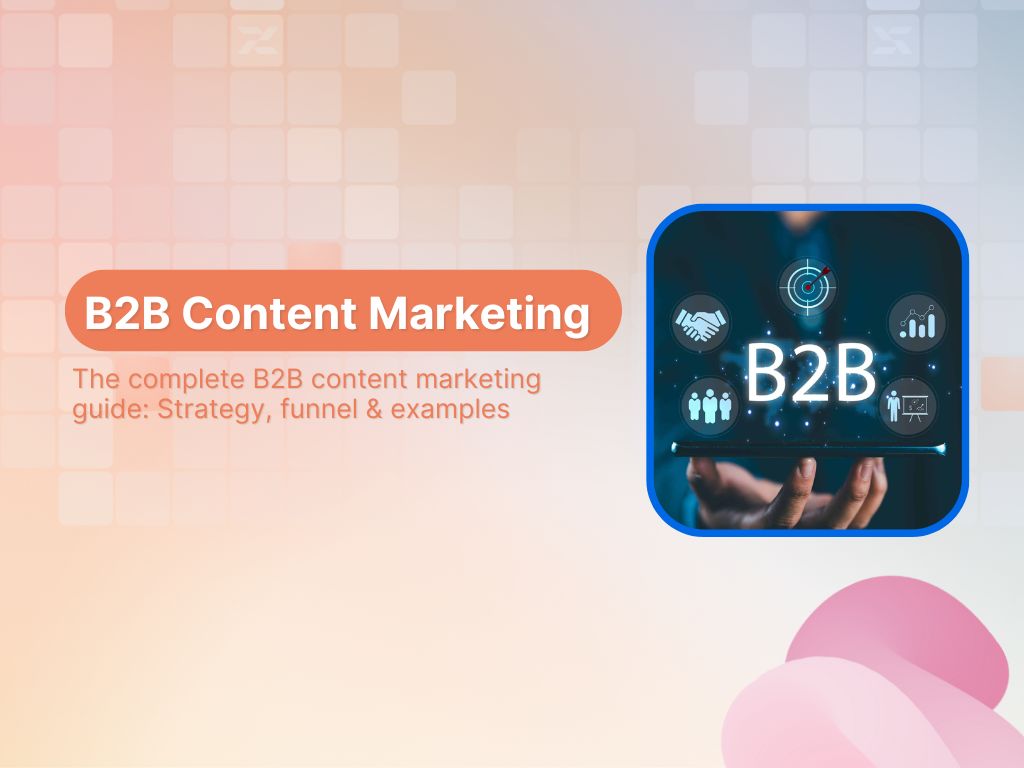
The complete B2B content marketing guide: Strategy, funnel & examples
B2B content marketing is something that can make or break your business. You might already be familiar with its basics, but it is important to discuss it in detail in terms of types, benefits, examples, and strategies to implement a successful B2B content marketing strategy. And if you are wondering why you need B2B content […]
Oct 29, 2025
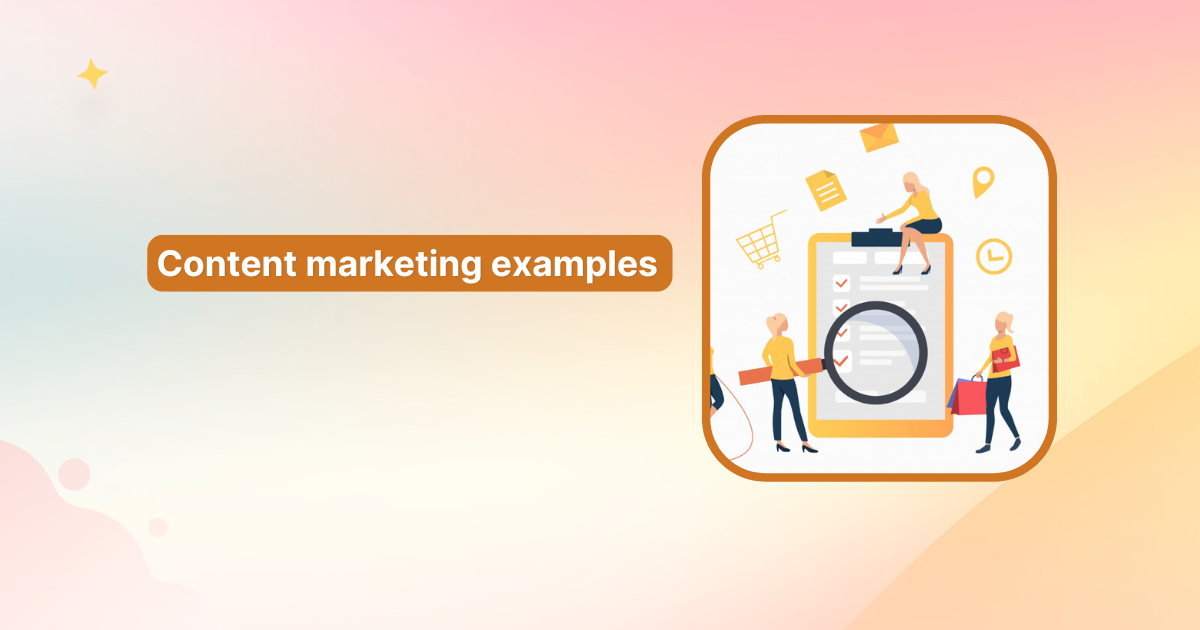
Content marketing examples that drive results in 2025
Here’s a sobering truth: 96% of content published online gets zero traffic from Google. Zero! Yet the examples you’re about to see generated millions of views, thousands of shares, and drove real business results. What makes them different? They didn’t follow the “publish and pray” strategy! Instead, each one used a specific psychological trigger, solved […]
Sep 29, 2025

What is blogging? The ultimate guide
Should I start my own blog? Is blogging dead? Can I get paid for blogging? What does blogging even mean in this age of AI? These are some of the most common questions associated with blogging, and we’ll be answering all of them in detail to understand what blogging is. Blogging has changed a lot […]
Sep 17, 2025